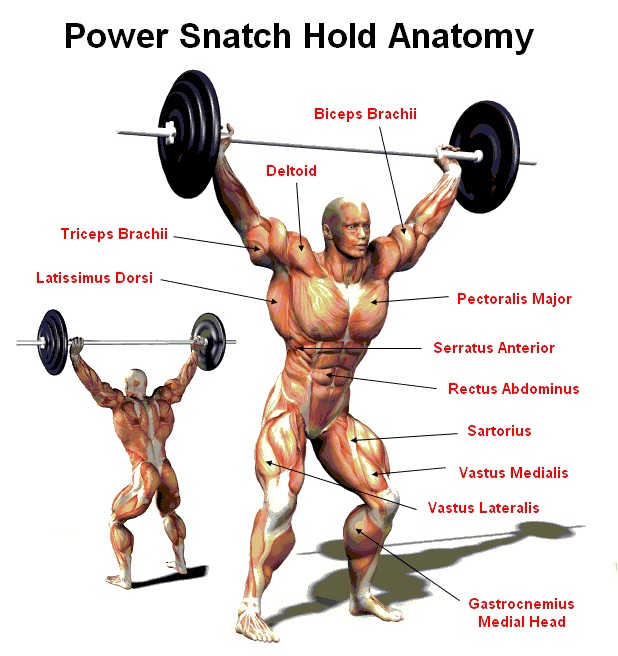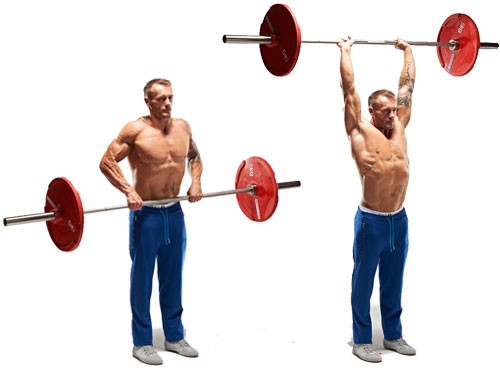The Cuban Press – also referred to as the Muscle Snatch – is often used as an advanced movement for training the external rotator muscles. It is employed to train the infraspinatus and teres minor, to improve those muscles’ ability to contract at high speeds to stabilise the head of the humerus – the upper arm bone – during throwing movements such as javelin, shot put, pitching, etc. It is the pathway that a barbell takes when performing the upper body portion of the power snatch.

Physiology for the Cuban Press / Muscle Snatch
The Cuban Press is a hard exercise, but it’s fun, and it happens to make your shoulders look awesome. It is also an outstanding introduction to performing overhead work, since the strength of the external rotators is usually the limiting factor in performing shoulder presses properly.
Overhead pressing strength is directly correlated with shoulder girdle health, and is responsible for 10% of vertical jump capability, as well as successful explosive starts from 3-point or 4-point stances, and starts from blocks. Lastly, from an endurance component, overhead strength potentiates the forward drive of arm swing in running when the legs become fatigued.
Cuban Press / Muscle Snatch – Preparation and Warm Up
To learn to perform the Cuban Press, it is best to have a 15-lb Olympic barbell available. This bar is also referred to as a technique bar, or sometimes a ladies bar. It is guaranteed to increase blood pressure as well as maximal effort.
If a technique bar is not available in your gym, I recommend using body bars until you build enough strength to use a full size Olympic barbell. I also recommend that you start with the pink one.
Tips for Cuban Press / Muscle Snatch
- Keep the chest up and the upper back erect during the performance of the exercise. There will be a strong impetus to drop the chest and relax the upper back extensors as the bar passes the chest. It must be resisted.
- Keep the elbows out during the initial pull. It is common to see inexperienced lifters pull the elbows backward AND upward; the elbows must have an upward-only trajectory.
- Keep your face clear of the bar. This exercise is good for a bloody nose or two if you do not pay attention, and I have seen one trainee display a great initial pull, only to slam himself in the chin and require six stitches to close up the wound. Enough said: pay attention!
- Despite the peril to the face, keep the bar close to the body during the pulling phase.
- Have a gander at our video to witness the Cuban Press in all its glory.

